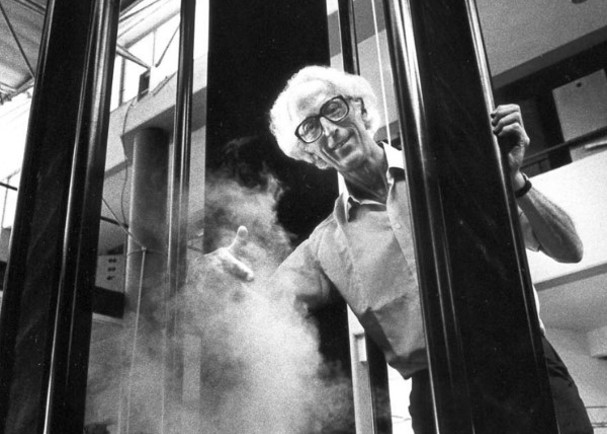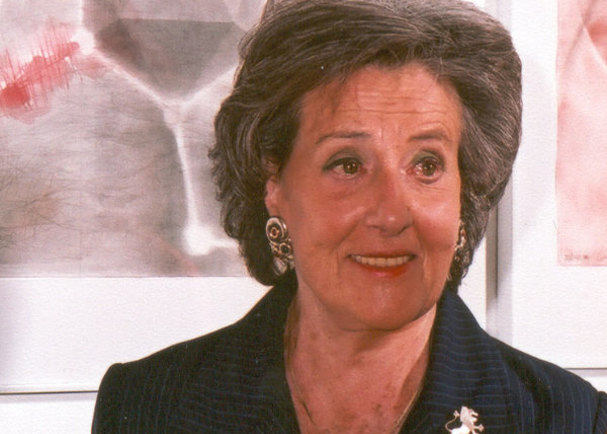Our History
From Concept to Reality: Our History/Our Story
If someone were to ask, “How did this all come about?” The answer would be fairly simple: it all began in Professor Peter Hillman’s laboratory at the Institute of Life Sciences, located in the heart of the Hebrew University’s Givat Ram campus in Jerusalem, in 1980.
Immersed in the academic atmosphere of Givat Ram and the clear, world-famous mountain air of Jerusalem, Professor Hillman and a group of scholars from the Hebrew University came together for a common goal: establishing a permanent space for exhibiting science in ways that will enthrall and attract everyone: adults, teenagers and even very young children.
The group sought to model the new museum on the Exploratorium in San Francisco, founded by Frank Oppenheimer in 1969. Together with Canada’s Ontario Science Centre, which opened in the same year, these institutions presented the world with an innovative model for interactive science museums. The group led by Professor Hillman established a non-profit called “Simply Science” for the purpose and set to work. “Simply Science” operated from the Givat Ram campus for ten years.
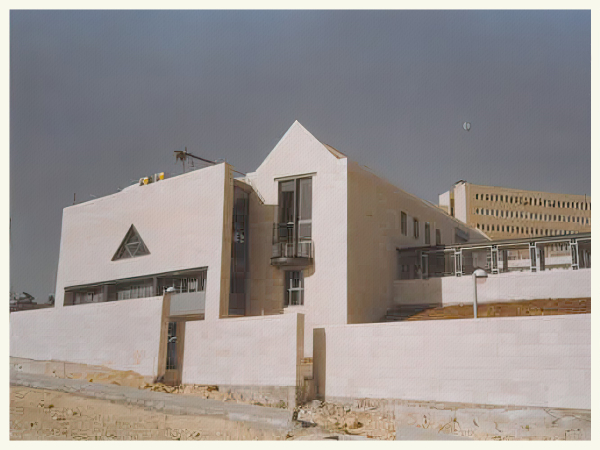
With the goal of learning how to establish a flourishing science museum in Jerusalem, the Givat Ram group adopted two strategies:
- Act: the “Seeing Eye – Science Workshop” was established in 1982 as an experimental laboratory open to the public, where staff could interact with visitors to jointly examine the most fitting exhibition tools, as well as tour guiding practices best suited for the Israeli public. In the framework of “Seeing Eye – Science Workshop,” several exhibitions were put together, among them “On the Senses” and “Large and Small”; public events were held, including “Soap Bubbles” and “Going ‘Round”; education programs for school children were developed; after-school workshops and enrichment programs were held; and teachers were offered continuing education activities and programs.
- Think: the group met regularly as a think tank with the aim of formulating the museum’s mission statement. This was presented during the International Bat Sheva Conference, organized by Prof. Hillman in Jerusalem in 1982, and attended by experts from Israel and abroad. The event produced the underlying principles upon which all science museums in Israel were founded.
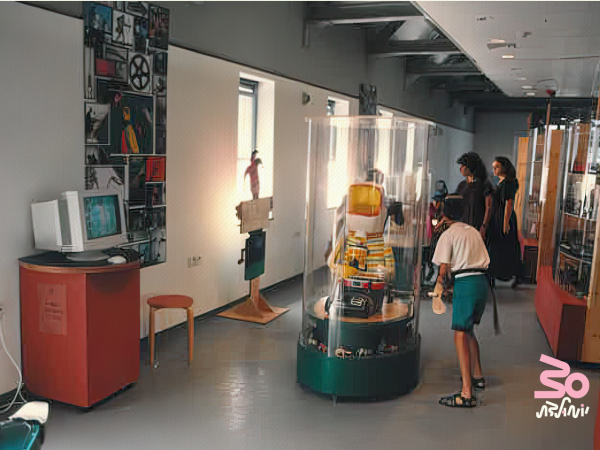
The event encouraged the Givat Ram group to continue to explore, formulate plans, and interact through experiential activities with the general public. They also began to look for material support and resources to establish an interactive science museum in Jerusalem.
The group formulated a master plan for a science museum spread over an area of 10,000 square meters and a large adjacent IMAX theater. A lot was found and allocated on the National Museums Boulevard, fittingly situated between the Israel Museum and the Hebrew University's science campus.
Teddy Kollek, the mayor of Jerusalem at the time, was familiar with the project from its formative years and was an ardent supporter. What the group needed now was a benefactor with whom the Jerusalem Foundation could partner to convert the idea into a reality. The Bloomfield family funded the construction of the museum through the Eldee Foundation, and the Jerusalem Foundation was in charge of construction. The first wing of the science museum was opened in July 1992.

A small team oversaw the process to fruition. As the project progressed, the team expanded and additional areas of responsibility were delegated. Prof. Hillman served as the founding director of the museum, Maya Halevy led the planning committee and became Director of Exhibitions, and Raya Tuchman was put in charge of all educational activities and the founding of the preschool science center. During these early years, Diana Pinus joined the preschool team, Benny Nachmani was appointed manager of the technical crew, and Dr. Amir Ben-Shalom became Director of Exhibit Development. These individuals formed the core group of the museum’s permanent team.
The Hebrew University in Jerusalem, the Jerusalem Foundation and Prof. Hillman’s original non-profit, “Simply Science,” established a new non-profit – the Bloomfield Science Museum in Jerusalem - and appointed a Board of Directors made up of 15 members. Prof. Itzhak Parnas served as the first Chair of the Board.
The popularity of the museum demanded an expansion plan, and a detailed plan for a new wing was submitted in 1995. The museum’s second wing was inaugurated in the summer of 2001. This wing was jointly funded by the Bloomfield family, the Ministry of Education and benefactors acting through the Jerusalem Foundation.
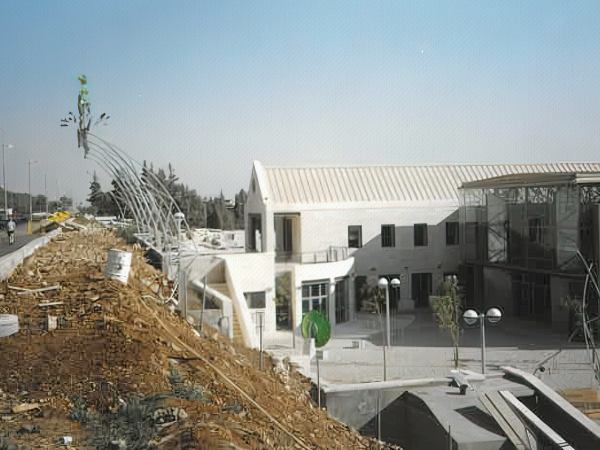
Ministry of Education and benefactors acting through the Jerusalem Foundation.
With each passing year, the science museum is reinvigorated by new, innovative avenues of research and activities, developed by the staff and the museum’s many partners, who believe that science is a common language that can transcend differences in gender, age, backgrounds and religious beliefs.
Since 1992, more than seven million people visited the museum, more than 40 exhibitions were created, 30 changing exhibitions were displayed (some imported and some locally-made), thousands of interactive exhibits were developed, more than 120 special events were held for the public, hundreds of educational programs were developed (from preschool to seniors’ programs) - and counting.
The Bloomfield Science Museum in Jerusalem aspires to continue to serve as a “Hub & Lab” in the fields of scientific and technological culture and education.
We will continue to operate in light of the principles and vision that have guided the museum since its inception: to provide an experiential, experimental home for all those who seek to “learn how to learn.”
We aspire to grow; to continue to develop the museum, its internal and external physical environments, as well as its online and virtual spaces, while finding ways to integrate them; to curate and host new shows and exhibitions; to serve as a hub for development, knowledge and enrichment in science and technology for students and teachers; to encourage excellence in girls and boys from all sectors of Israeli society; to provide a wide range of activities and experiences for all members of the family, of all ages, in a myriad of scientific fields; to inspire discourse and debate and provide an open space for an experiential, enjoyable process of research and learning while creating local and international collaborations in science and technology.
Currently, the science museum is spearheading an ambitious project: establishing an Israeli museum of nature as part of a shared campus, while forging connections between the different scientific branches. The shared campus will exhibit natural phenomena and scientific principles, the methodology that has led to new discoveries and insights (including observations and theories), alongside relevant developments in tech and industry. The display of various scientific disciplines under one roof will allow us to present the profound connections, as well as surprising differences, between different scientific approaches in search for universal patterns in the world around us.
Chairpersons of the Board:
Prof. Itzhak Parnas, 1992-1993.
Dr. Dan Sharon, 1993-1995.
Prof. Nava Ben Zvi, 1995-2010
Prof. Re'em Sari, 2010-2014
Shlomo Yanai, 2014 to date

